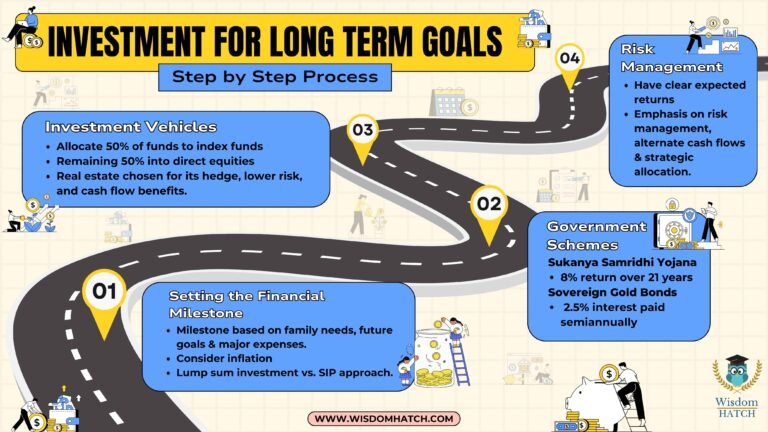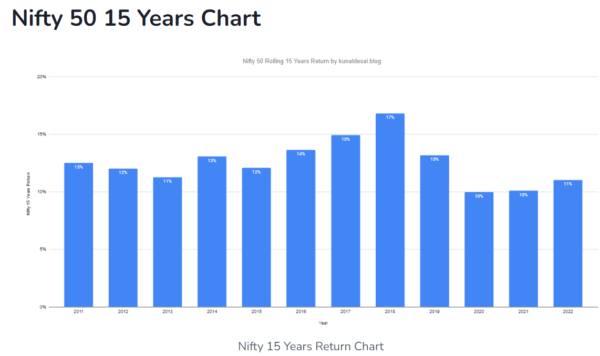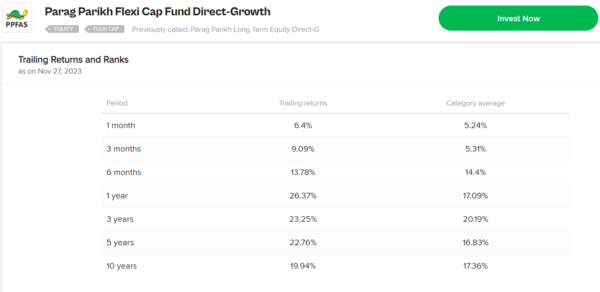Step-by-Step Process to Invest for Your Long Term Goals

In the ever-evolving landscape of personal finance, planning for your long term goals like your children’s future is paramount.
This blog will dissect the nuances of their financial strategy, covering topics from determining the investment milestone to the allocation of funds in index funds, equities, and real estate.
Here's what we'll cover:
● Setting the Financial Milestone
- How do you calculate your target amount?
- What considerations will influence this decision?
● Government Schemes: Sukanya Samridhi Yojana and Sovereign Gold Bonds
- What are the pros and cons of Sukanya Samridhi Yojana and Sovereign Gold Bonds?
- How do these government-backed schemes fit into your diversified portfolio?
● Cash Flow-Based Assets
- Why is building alternate cash flow important in financial planning?
- How can you leverage Real Estate to create a cash flow?
● Investment Vehicles: Index Funds, Equities, and Real Estate
- How much to allocate?
- What role do different vehicles play in your portfolio?
- How can real estate fit into your investment strategy?
● Mutual Funds and Flexi Cap Funds
- Why consider mutual funds, especially for risk-averse investors?
- What is the significance of Flexi Cap Funds in a long-term investment plan?
● Portfolio Returns and Risk Management
- How does this diversified approach contribute to risk management?
Setting the Financial Milestone:
Determining the right financial milestone is pivotal.
There is no one-size-fits-all approach here.
It depends on:
- Family Needs
- Future Goals
- Major Expenses (For eg: Education Abroad)
It is also essential to recognize that the value of money would decrease over time.
So it is important to keep inflation in mind when deciding on this number.
Setting this substantial milestone ensures a robust financial foundation for the child’s educational journey.
If you are looking to invest a Lump Sum amount, the process becomes easier as you can invest in a safer asset that at least beats inflation consistently.
If you are looking to start a Systematic Investment Plan (SIP), then you can calculate the amount accordingly using an Investment Calculator.
But make sure to plan for an inflation adjusted return.

So if you invest INR 25,000 every month for the next 20 years and grow it at a CAGR of 12%, you will have a corpus of 2.5 crores.
But as noted above, this 2.5 crores will be worth 62.5 Lakhs after inflation adjustment.

Government Schemes: Sukanya Samridhi Yojana and Sovereign Gold Bonds:
Government-backed schemes play a crucial role in the diversified approach.
Example 1:
The Sukanya Samridhi Yojana gives you a 8% return with a very long locking period of almost 21 years (or when the female child gets married).
Considering the inflation in the economy is close to 7%, your adjusted real return is extremely low.
So this instrument is not a method to grow your investment.

However, it’s good to consider such schemes to invest your surplus money once your equity investments goal is met or to avail tax benefits.
Example 2:
Sovereign Gold Bonds
- SGBs are government backed gold bonds that offer a 2.5% annual interest rate paid every 6 months.
- They don’t have any more charges involved and attract zero capital gains tax on maturity.
- It’s a way to circumvent owning physical gold and avoiding making charges and other commissions.

However,
● Gold has longer cycles and offers less attractive returns than equity or debt.
● Additionally SGBs are government bonds and are still paper assets.
- They don’t come under physical hard assets and if the government defaults, these SGBs also loses its value.
Cash Flow-Based Assets:
It is also very important to invest in assets that generate cash flows.
Purchasing Real Estate is one of the best ways to go about doing it.
Consider buying real estate on leverage.
For eg: it’s possible to purchase a 1 crore property by paying a down payment of 20 Lakhs.
This will work as long as the property is generating a consistent cash flow.
These cash flows allow opportunistic buys when unique circumstances like market falls presents itself.
Good Real Estate, similar to Stocks, are ones that are purchased at good rates.
Most of the opportunities that you see are inflated, so it’s important to scout and do your own research.
Look for properties that get you at least a 4% rental yield and have growth opportunities.
Investment Vehicles: Index Funds, Equities, and Real Estate:
Allocation of funds is a cornerstone of a robust investment strategy.
Here’s one possible way to consider investing across asset classes for medium risk investors
● Earmarking 50% of funds for index funds provides a secure and growth-oriented avenue over a 20-year horizon.
- This investment is made with a goal to make 10-12% CAGR over 20 years.
- Data on the historical performance of index funds showcases their resilience and consistency.

The remaining 50%, diversified into direct equities (or Mutual Funds) and real estate, aligns with a strategic approach.
● You can look to invest 20% in Direct Stocks or through Mutual Funds.
- These can be invested with a goal to make >12% over the span of 20 years.
- If you are a serious investor and are looking for advanced techniques with a focus on better returns, join our Wisdom Hatch community where we give live and timely updates on the Stock Market.
● Real estate, specifically chosen for its means as a hedge, lesser risk, and as a means to create cash flows can be your final 30%.
Let’s take a deeper look at some of these instruments.
Mutual Funds:
● For risk-averse investors seeking professional management, mutual funds emerge as a preferred choice.
● The statistics on mutual fund returns compared to traditional government schemes underscore their safety and higher returns.
● The introduction of Flexi Cap Funds, with the flexibility to mix debt and equity, aligns seamlessly with a long-term investment horizon.
- Historical data on the performance of Flexi Cap Funds substantiates their potential to deliver optimal returns.
- If you are investing for a long term horizon of 15-20 years, then such funds could be good choices.

Portfolio Returns and Risk Management:
It’s important to have clear expected returns from each component of your portfolio.
Historical data on index funds, equities, and real estate demonstrate their unique advantages, contributing to a diversified approach that mitigates risk.
The emphasis on risk management, alternate cash flows, and strategic allocation is underlined by data, serving as a valuable blueprint for families navigating the intricate landscape of financial planning.
Conclusion
Your long term goal-oriented portfolio can comprise different asset classes which strategically balances growth, stability, and risk mitigation.
Informed decision-making, rooted in data, historical performance, and a forward-looking approach, is paramount in securing the financial future of the next generation.
- Determine the financial milestone based on family needs, future goals, and major expenses.
- Consider inflation when deciding the target amount.
- Lump sum investment vs. Systematic Investment Plan (SIP) approach.
- Use an investment calculator for SIP planning.
Government Schemes:
- Sukanya Samridhi Yojana and Sovereign Gold Bonds:
- Sukanya Samridhi Yojana has a long lock-in period with a relatively low real return after adjusting for inflation.
- Consider such schemes for surplus money after meeting equity investment goals or for tax benefits.
- Sovereign Gold Bonds offer a 2.5% annual interest rate, but gold has longer cycles and lower returns compared to equity or debt.
- Invest in assets that generate cash flows, such as real estate.
- Purchase real estate on leverage for opportunistic buys during market downturns.
- Look for properties with at least a 4% rental yield and growth opportunities.
- Allocate 50% of funds to index funds for secure and growth-oriented returns over 20 years.
- Diversify the remaining 50% into direct equities or mutual funds (20%) and real estate (30%).
- Real estate chosen for its hedge, lower risk, and cash flow benefits.
- Mutual funds are suitable for risk-averse investors seeking professional management.
- Flexi Cap Funds, blending debt and equity, align well with a long-term investment horizon.
- Historical data supports the potential of Flexi Cap Funds for optimal returns over 15-20 years.
- Have clear expected returns from each portfolio component.
- Historical data on index funds, equities, and real estate supports a diversified approach for risk mitigation.
- Emphasis on risk management, alternate cash flows, and strategic allocation.
Ever wondered what we get in return for the taxes we pay in India. Whether the Tax Structure is TOXIC? Check out our Blog post on HEAVY TAXES, But we get NOTHING in return
MUST know BEFORE you become an Airbnb host
Medium Article Preksha Chand edit post MUST know BEFORE you become an Airbnb host Medium Article Preksha Chand edit post MUST know BEFORE you become an Airbnb host Medium...
Make more money from your property: Short-term rental [Airbnb]
Medium Article Preksha Chand edit post Make more money from your property: Short-term rental [Airbnb] Medium Article Preksha Chand edit post Make more money from your property: Short-term rental...
GOA Airbnb Laws: What Hosts Need to Know [2024]
Medium Article Preksha Chand edit post Make more money from your property: Short-term rental [Airbnb] Medium Article Preksha Chand edit post Make more money from your property: Short-term rental...





